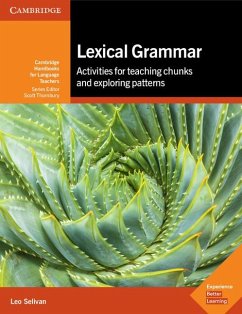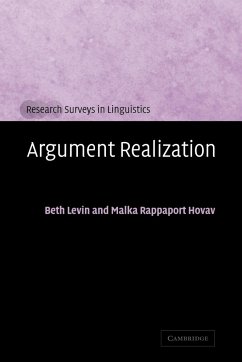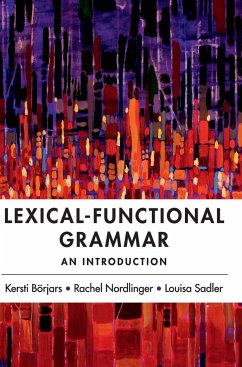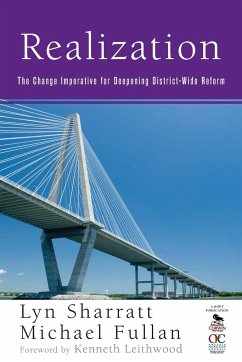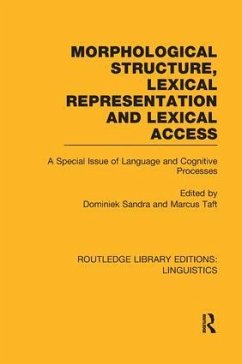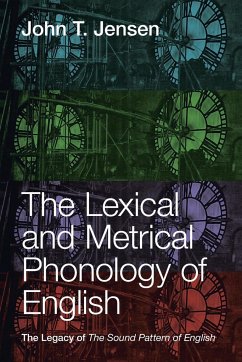
Lexical frequency and s-realization in Barranquilla, Colombia
The role of lexical frequency in the weakening of syllable-final lexical-s in the Spanish of Barranquilla, Colombia
Versandkostenfrei!
Versandfertig in 6-10 Tagen
79,00 €
inkl. MwSt.

PAYBACK Punkte
0 °P sammeln!
This book reports on a quantitative analysis of /s/in words of different lexical frequencies in acohesive speech community. Speakers fromBarranquilla, Colombia between 20-26 years of ageread approximately 100 sentences, containing wordswith s + consonant sequences. These productions weresubmitted to auditory acoustical analysis; visualinspection of spectrograms was carried out forambiguous cases in which the strong sibilance thatcharacterizes /s/ was not clear. The findings revealthat the single most important factor conditionings-realization is lexical frequency. Speakers tendtowards full art...
This book reports on a quantitative analysis of /s/
in words of different lexical frequencies in a
cohesive speech community. Speakers from
Barranquilla, Colombia between 20-26 years of age
read approximately 100 sentences, containing words
with s + consonant sequences. These productions were
submitted to auditory acoustical analysis; visual
inspection of spectrograms was carried out for
ambiguous cases in which the strong sibilance that
characterizes /s/ was not clear. The findings reveal
that the single most important factor conditioning
s-realization is lexical frequency. Speakers tend
towards full articulation of /s/ in low-frequency
words, while weakening it in high-frequency words.
The importance of this factor becomes more apparent
when one examines a wider range of the frequency
scale than what is attested in conversational speech.
These findings support models of language which
incorporate lexical frequency as a central component
in explaining variations across words in both
individual and communal grammars.
in words of different lexical frequencies in a
cohesive speech community. Speakers from
Barranquilla, Colombia between 20-26 years of age
read approximately 100 sentences, containing words
with s + consonant sequences. These productions were
submitted to auditory acoustical analysis; visual
inspection of spectrograms was carried out for
ambiguous cases in which the strong sibilance that
characterizes /s/ was not clear. The findings reveal
that the single most important factor conditioning
s-realization is lexical frequency. Speakers tend
towards full articulation of /s/ in low-frequency
words, while weakening it in high-frequency words.
The importance of this factor becomes more apparent
when one examines a wider range of the frequency
scale than what is attested in conversational speech.
These findings support models of language which
incorporate lexical frequency as a central component
in explaining variations across words in both
individual and communal grammars.



